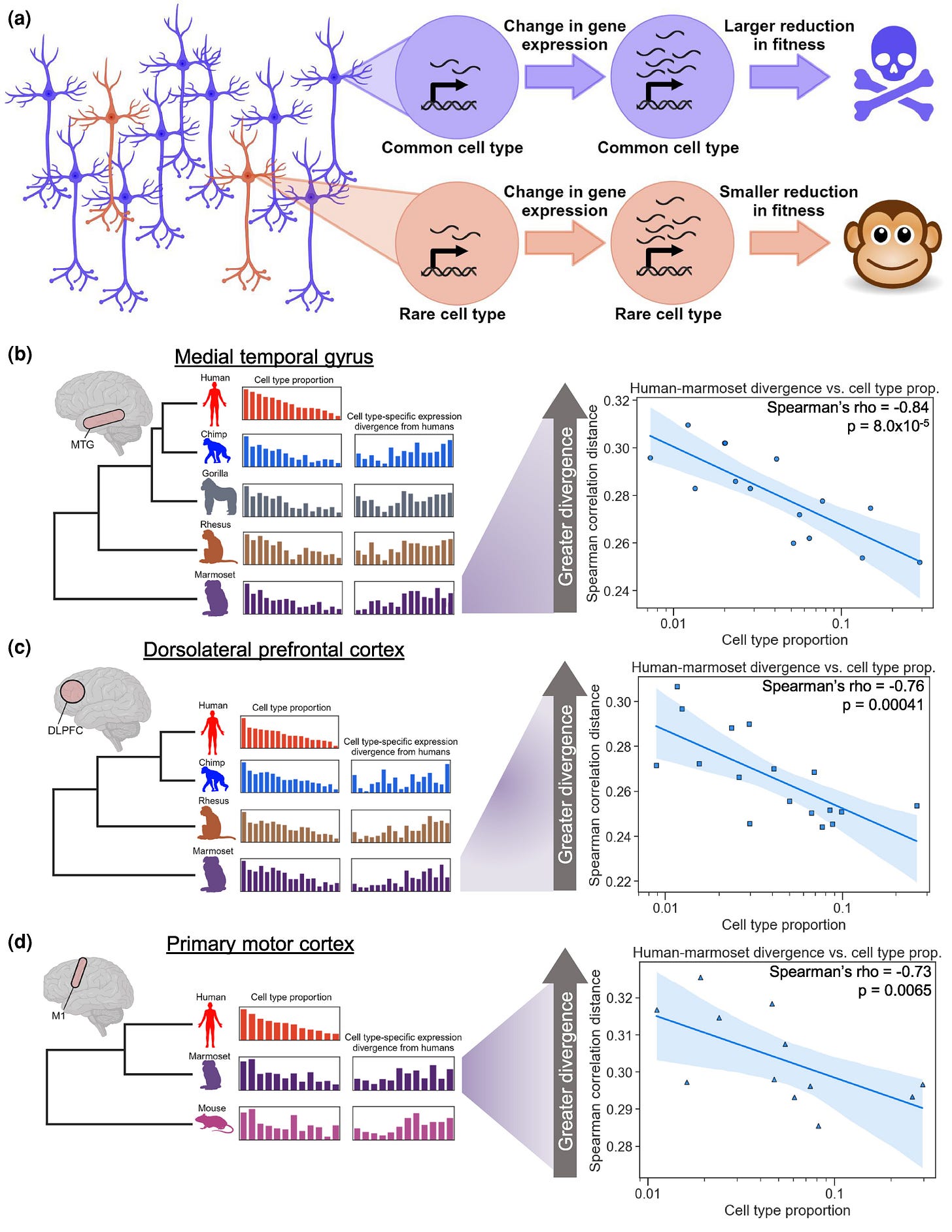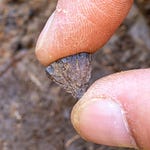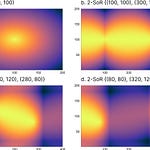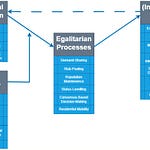A New Look at the Evolution of the Human Brain
One of the enduring questions in human evolution is why certain cognitive conditions—autism spectrum disorder (ASD) among them—appear far more common in Homo sapiens than in other primates. A new paper in Molecular Biology and Evolution1 tackles this puzzle from a fresh angle, linking cell-type evolution in the neocortex to the genetics of autism.
“The most abundant type of neocortical neurons—layer 2/3 intratelencephalic excitatory neurons—has evolved exceptionally quickly in the human lineage compared to other apes,” Starr and Fraser report.
This finding suggests a remarkable trade-off: the same changes that may have helped build the uniquely human brain could also have increased our vulnerability to autism.

Why Layer 2/3 Neurons Matter
The human neocortex contains an extraordinary diversity of neurons. Starr and Fraser analyzed single-nucleus RNA sequencing data from multiple primate species to track how different cell types changed over time. They discovered a consistent pattern: more common neuronal cell types evolved more slowly, likely because mutations in them carry a higher cost.
But one group stood out. Layer 2/3 intratelencephalic (L2/3 IT) neurons, which connect different regions of the cortex and underpin higher-order cognition, evolved much faster in the human lineage than expected.
“This accelerated evolution was accompanied by dramatic down-regulation of autism-associated genes, which was likely driven by polygenic positive selection specific to the human lineage,” the authors write.
Evolution’s Double-Edged Sword
Why would natural selection favor changes that increase autism risk? Starr and Fraser point to several possibilities. Many autism-linked genes also influence brain development speed. Humans have an unusually slow postnatal brain development compared to other primates, which may have allowed more complex learning—including language—to take root.
They also note that changes in L2/3 IT neurons overlap with genes tied to schizophrenia, hinting at a broader evolutionary reshaping of the human brain’s wiring and plasticity.
“Our analysis suggests that natural selection on gene expression may have increased the prevalence of ASD, and perhaps also schizophrenia, in humans,” the paper states.
Testing the Hypothesis in the Lab
To rule out non-genetic explanations, the team used human–chimpanzee hybrid cortical organoids to measure allele-specific expression in identical environments. This experiment showed a consistent bias: human alleles of autism-linked genes were expressed at lower levels than chimpanzee alleles.
This pattern strongly supports lineage-specific natural selection rather than random drift.
Rethinking Human-Specific Disorders
From an anthropological perspective, these findings suggest that conditions often framed purely as “disorders” may instead be byproducts of the same evolutionary pressures that gave rise to our species’ extraordinary cognition. Rather than being uniquely pathological, autism’s prevalence might reflect a legacy of how our brains evolved to learn slowly, integrate information across cortical regions, and develop complex social and linguistic capacities.
Where This Leaves Anthropology and Archaeology
For anthropologists and archaeologists, the study highlights the importance of integrating genetics, neuroscience, and evolutionary theory to understand human uniqueness. Just as stone tools and symbolic artifacts offer windows into our ancestors’ behavior, neuronal cell types and their gene expression profiles may hold keys to our cognitive past.
Summary for Social Media (235 characters):
New research links autism’s high prevalence to rapid evolution of a key human neuron type. The same changes that built our unique cognition may have increased neurodiversity. #Anthropology #HumanEvolution #Neuroscience
Related Research:
Human-accelerated regions and autism: Doan, R. N. et al. (2016). Molecular Psychiatry, 21(1), 80–88. https://doi.org/10.1038/mp.2015.142
Human-specific gene expression shifts in the brain: Liu, X. et al. (2016). Nature, 530(7590), 171–174. https://doi.org/10.1038/nature16505
Neocortical neuron diversity across species: Bakken, T. E. et al. (2021). Nature, 598(7879), 111–119. https://doi.org/10.1038/s41586-021-03465-8
Human–chimp hybrid organoids for evolutionary studies: Gokhman, D. et al. (2021). Nature, 592(7853), 277–283. https://doi.org/10.1038/s41586-021-03498-z
Starr, A. L., & Fraser, H. B. (2025). A general principle of neuronal evolution reveals a human-accelerated neuron type potentially underlying the high prevalence of autism in humans. Molecular Biology and Evolution, 42(9). https://doi.org/10.1093/molbev/msaf189









